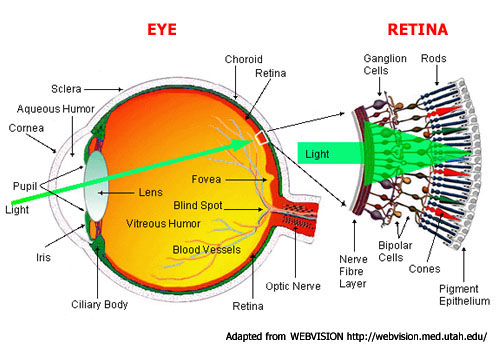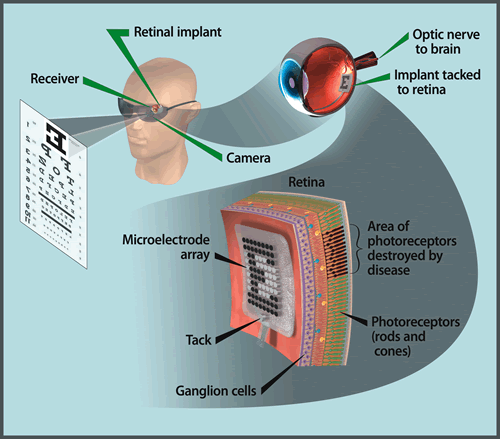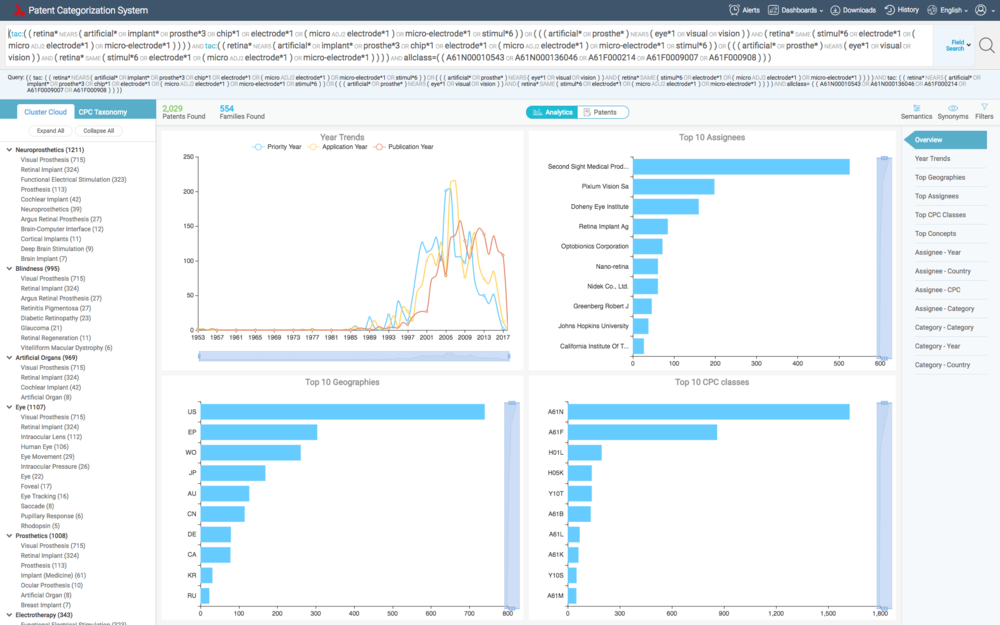Difference between revisions of "Artificial Retina"
Venkatram.a (Talk | contribs) (→Search in PCS) |
Venkatram.a (Talk | contribs) (→Search in PCS) |
||
| Line 30: | Line 30: | ||
|} | |} | ||
<br> | <br> | ||
| − | [[Image:Artifical_Retina_PCS_01.png|center| | + | [[Image:Artifical_Retina_PCS_01.png|center|1000px]] |
[[Image:KTP_Laser_04.png|center|50px]] | [[Image:KTP_Laser_04.png|center|50px]] | ||
| − | [[Image:Artifical_Retina_PCS_02.png|center|800px]] | + | [[Image:Artifical_Retina_PCS_02.png|center|1000px]] |
| + | <br> | ||
| + | |||
| + | =Top Assignee= | ||
| + | |||
| + | [[Image:Artifical_Retina_PCS_03.png|center|800px]] | ||
| + | |||
| + | *The top companies under top 5 that are big players in Artificial vision devices from North America: | ||
| + | **Second Sight Medical Products – California | ||
| + | **Optobionics Corporation – Illinois | ||
| + | |||
| + | *The top two companies that are big players in Artificial vision devices from Europe: | ||
| + | **Pixium Vision - France | ||
| + | **Retina Implant AG - Germany | ||
| + | |||
| + | *Three major universities in US, that have also patented technologies in this space: | ||
| + | **John Hopkins University | ||
| + | **California Institute of Technology | ||
| + | **Cornell University | ||
Revision as of 23:16, 5 February 2018
Objectives
- Perform a landscape search in the area of Artificial Retina
- Use PCS to derive insights and gain competitive perspective
- Understand the value chain and recent M&A activities
Introduction
The retina is the third and inner coat of the eye, which is a light-sensitive layer of tissue. The optics of the eye creates an image of the visual world on the retina (through the cornea and lens).
Normal vision begins when light enters and moves through the eye to strike specialized photoreceptor cells in the retina called rods and cones. These cells convert light signals to electric impulses that are sent to the optic nerve and the brain.
At least two significant forms of blindness occur because of a loss of the photoreceptive cells of the retina, namely:
- Age-related macular degeneration - results in a loss of central vision, which eliminates a person's ability to read or recognize faces
- Retinitis pigmentosa - results in a slow loss of peripheral and then central vision
With the artificial retina device, a miniature camera mounted in eyeglasses captures images and wirelessly sends the information to a microprocessor (worn on a belt) that converts the data to an electronic signal and transmits it to a receiver on the eye. The receiver sends the signals through a tiny, thin cable to the microelectrode array, stimulating it to emit pulses. The artificial retina device thus bypasses defunct photoreceptor cells and transmits electrical signals directly to the retina’s remaining viable cells. The pulses travel to the optic nerve and, ultimately, to the brain, which perceives patterns of light and dark spots corresponding to the electrodes stimulated. Patients learn to interpret these visual patterns. Artificial Retina Project
Search in PCS
A search on PCS in the area of Artificial Retina was performed with the following search strategy:
|
tac:((retina* NEAR5 (artificial* OR implant* OR prosthe*3 OR chip*1 OR electrode*1 OR (micro ADJ2 electrode*1) OR micro-electrode*1 OR stimul*6))) OR tac:(((artificial* OR prosthe*) NEAR5 (eye*1 OR visual OR vision)) AND (retina* SAME (stimul*6 OR electrode*1 OR (micro ADJ2 electrode*1) OR micro-electrode*1))) AND allclass:((A61N00010543 OR A61N000136046 OR A61F000214 OR A61F0009007 OR A61F000908)) |
Top Assignee
- The top companies under top 5 that are big players in Artificial vision devices from North America:
- Second Sight Medical Products – California
- Optobionics Corporation – Illinois
- The top two companies that are big players in Artificial vision devices from Europe:
- Pixium Vision - France
- Retina Implant AG - Germany
- Three major universities in US, that have also patented technologies in this space:
- John Hopkins University
- California Institute of Technology
- Cornell University





